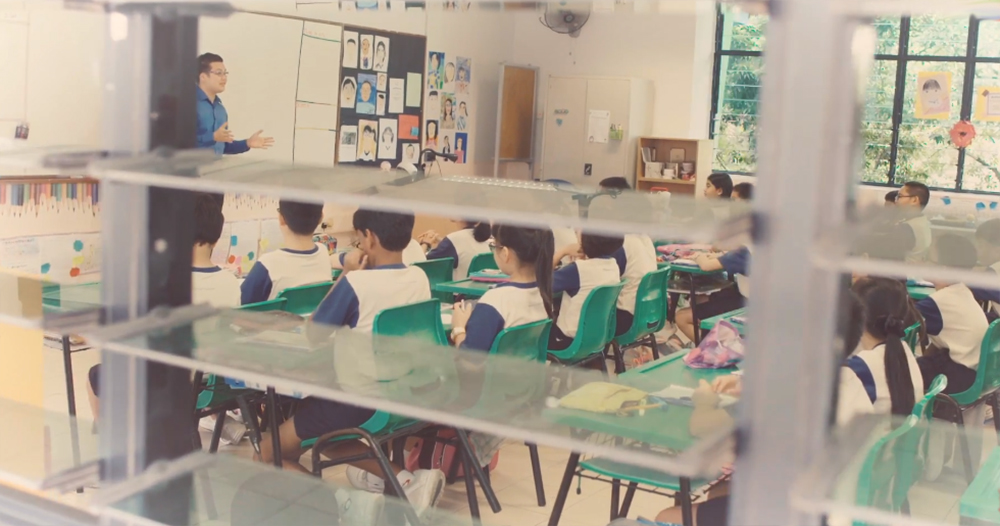The Economist published two articles on Aug. 30, 2018, extolling the virtues of Singapore's education system that is the stuff of envy for many other countries around the world.
The two pieces, "What other countries can learn from Singapore’s schools" and "It has the world’s best schools, but Singapore wants better", can be described as writing that take stock of changes in education here -- some effected, some underway, and some still pending.
Operationalised change
The positive attributes laid out are aplenty.
But instead of trying to spell out and reiterate the achievements of Singapore's education system in technocratic terms, let this article be an ode to teachers here.
After all, Singapore's highly-competent teachers were singled out by The Economist as one of the reasons that make the system work.
Because without them, there is no system to speak of.
Background
Some background: Singapore is in the midst of trying to align the classroom with the workplace.
By 2023, almost all schools will have “applied learning” programmes in subjects such as computing, robotics and electronics, and even drama and sports.
The emphasis is on practising in “real-world” environments and there are no exams.
For example, a subject such as media communications is to help students become better and more effective communicators.
This alignment between the education and the work force is being lubricated with 100 career-guidance officials.
They have been specifically hired to keep tabs on labour shortages and work with schools to inform children about their options.
Developing teachers in Singapore
Singapore's education successes are the work of its teachers.
The state goes to great lengths to develop excellent teachers.
Singapore teachers get 100 hours of training a year to keep up to date with the latest pedagogical techniques, which encourage group work and discussion between teacher and pupils.
Students are also increasingly taught how to be well-rounded people.
The work teachers put in is also compensated accordingly -- as they are both educators and administrators.
They are paid relatively well here -- the same as their peers in the private-sector professions.
This is so as teachers have larger classes to deal with.
Singapore accepts the need for larger classes: 36 pupils versus 24 pupils across the OECD countries.
The thinking here is that it is better to have big classes taught by excellent teachers, rather than smaller ones taught by mediocre teachers.
Teachers also have the responsibility of training their peers by becoming "master teachers".
Like students, teachers are also subjected to rigorous annual performance assessments.
How far ahead is Singapore
Singapore consistently ranks at the top of the OECD’s Programme for International Student Assessment (PISA).
PISA is a triennial test of 15-year-olds in dozens of countries, in the main three categories of maths, reading and science.
The testing has shown that Singaporean pupils are roughly three years ahead of their American peers in maths.
Singapore also leads the Trends in International Mathematics and Science Study, which measures 10- and 14-year-olds.
Why does Singapore do well?
Singapore favours traditional pedagogy with teachers leading the class, while in other countries, more progressive methods are employed to encourage students to learn by themselves.
Singapore's system of direct instruction has been faulted for being uncreative and stressful.
But even so, Singaporean students have recently been found to have better personal skills.
In 2015, Singaporean students also came first in a new PISA ranking designed to look at collaborative problem-solving, scoring even better than they did in reading and science.
They also reported themselves to be happy, more so than children in Finland.
Downsides of Singapore's education system
Even as there are pros, there are also cons.
The education system here segregates the high-achievers from the low-achievers into separate schools from age of 12, with uncertain benefits and contributes to stress.
PSLE is still the main hurdle that drives parents and students to excel academically -- even though there are many paths to excellence, as recently touted.
Pupils who excel end up in the best, most selective schools, while those who do badly go to vocational streams. The government has no plans to end this selection, according to The Economist.
But Singapore's system is in a good position to reform due to its long-term planning and strong fundamentals.
[related_story]
Changes to Singapore education
In 2012, the government abolished league tables for secondary schools, which it felt skewed teachers’ priorities.
The publication of the names of top scorers have been halted and the criteria used for entry to the best secondary schools have been widened.
From 2021, primary-school leavers will get a broad grade instead of a precise score.
Currently, a list of “21st Century Competencies” -- including “self-awareness” and “responsible decision-making” -- has been drawn up for every pupil to acquire.
Exam questions, for instance, have been reframed to be more open-ended, to encourage critical thinking as well as knowledge of a subject.
Teacher appraisals measure not just academic performance but also the social development of pupils.
So, it is safe to say that for any education policy to be enacted with appreciable success, would depend on the teachers in the classroom to carry out.
If you like what you read, follow us on Facebook, Instagram, Twitter and Telegram to get the latest updates.
